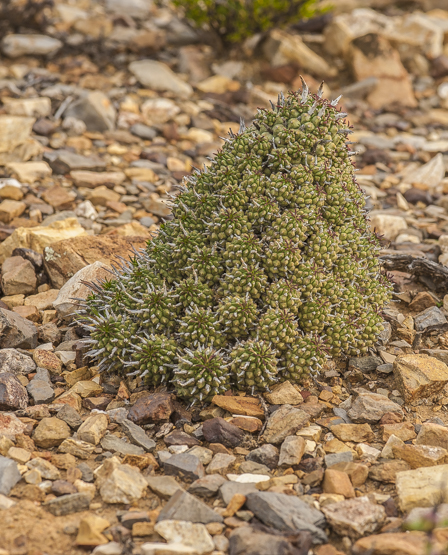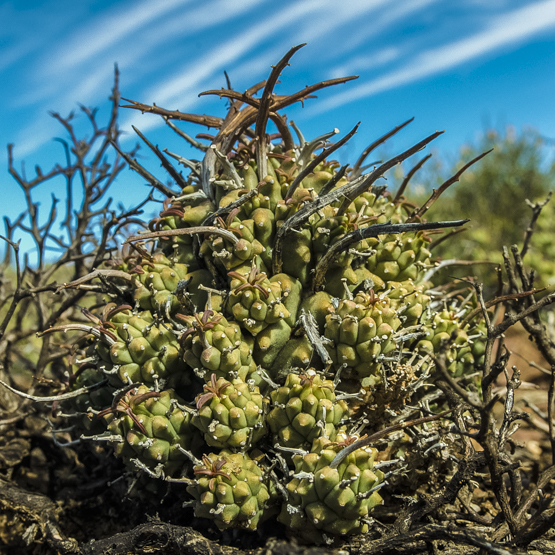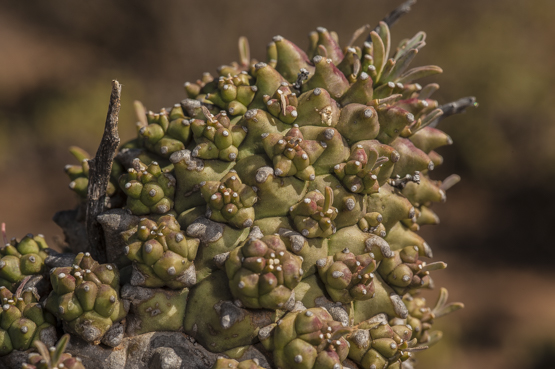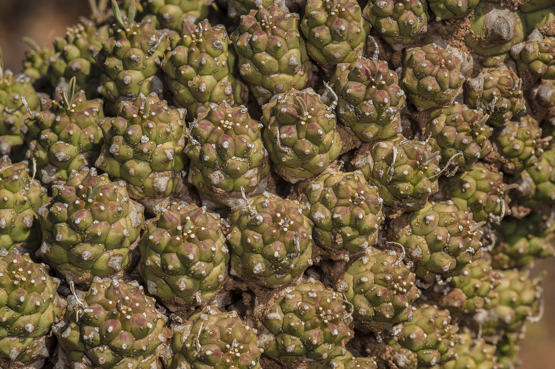


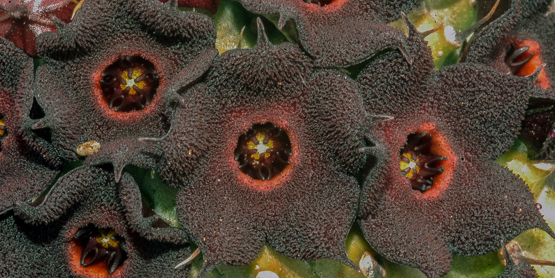




In the wild, this taxon is rare and endangered by both habitat degradation (as a result of overgrazing) and harvesting (for medicinal purposes).
Plants are found in the Little Karoo from Montagu to near Uniondale and in the southern Great Karoo from Matjiesfontein to Gamkapoort and Klaarstroom; they usually grow inside bushes.
The plants have few to many stems (3-6 cm in diameter) and form shrubs up to 80 cm tall and 2 meter across.
Flowers mainly appear in the upper part of the stem and have a nasty smell; they are 1.6-2 cm across and pinkish brown to very dark purplish brown, with a raised annulus.
My good friend George Hattingh of Calitzdorp, with whom I have spent many wonderful hours in the field, has kindly given me permission to make use of his pictures as and when needed, for which I am very grateful.
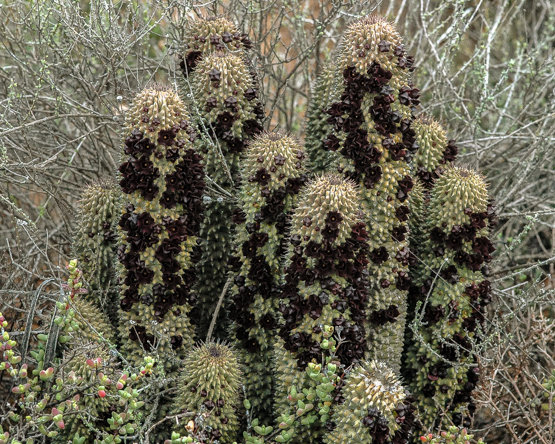
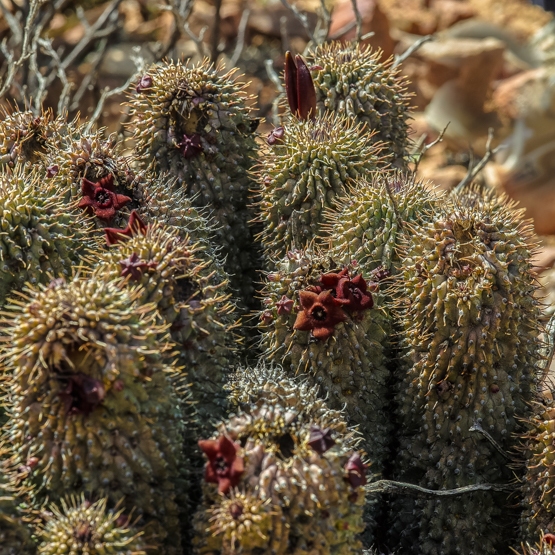
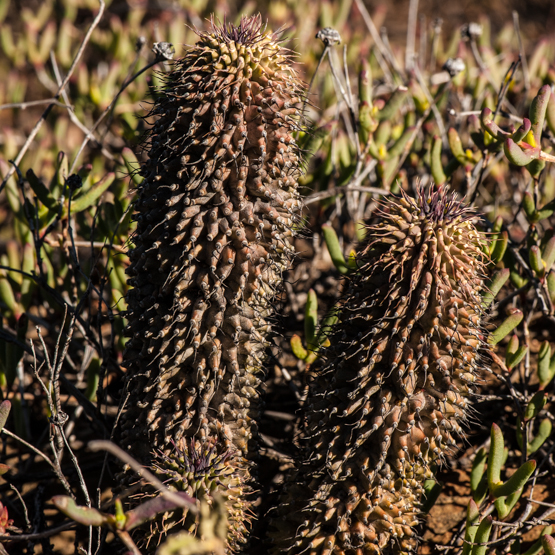
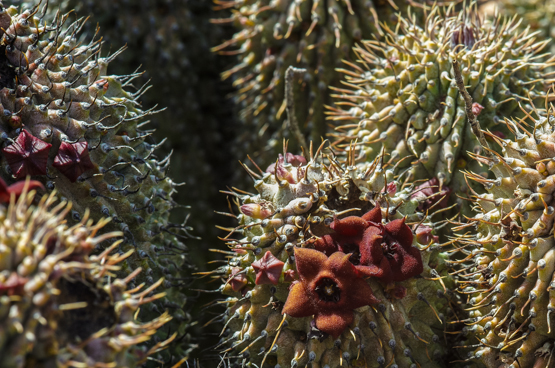
These compact plants rarely have more than 3 branches, each usually with two leaf-pairs.
The leaves are opposite and have sharp margins; they are thickened below, but without a hump.
Suavis means fragrant, referring to the nicely scented flowers, which are about 3 cm in diameter and appear in April-May.
Occurring on quartz and/or shaly sandstone in the western Little Karoo and the Laingsburg area.
The plants are similar to G. linguiforme, but with thicker leaves.
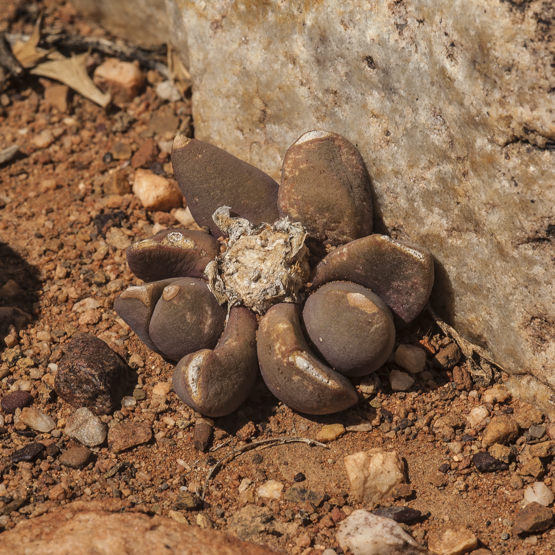
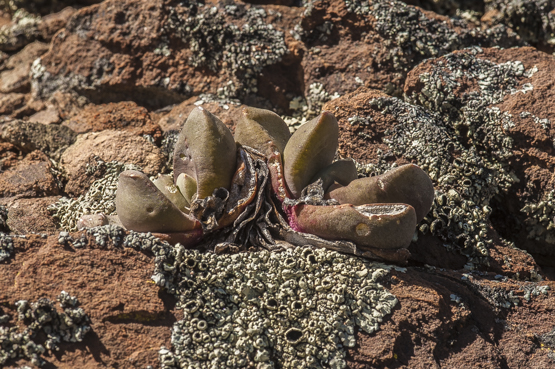
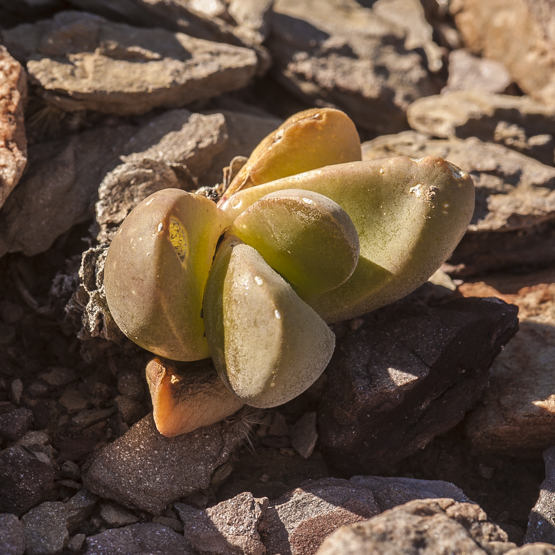
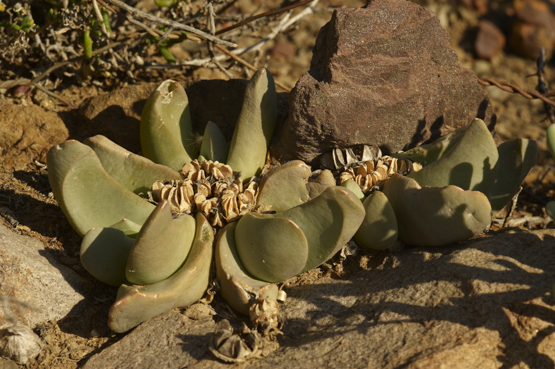
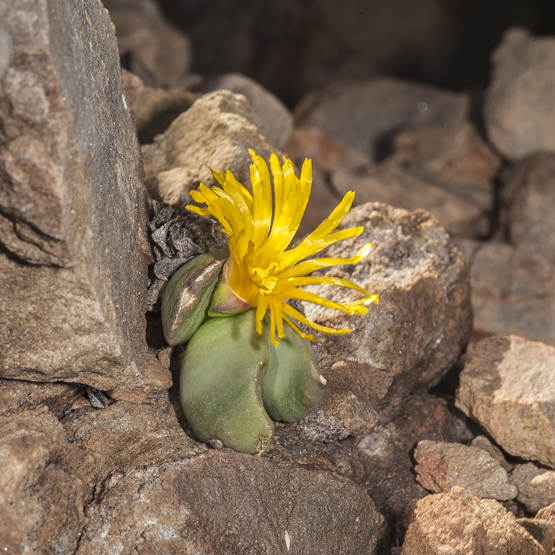
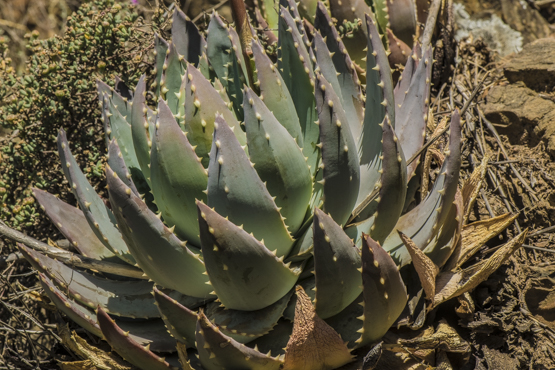
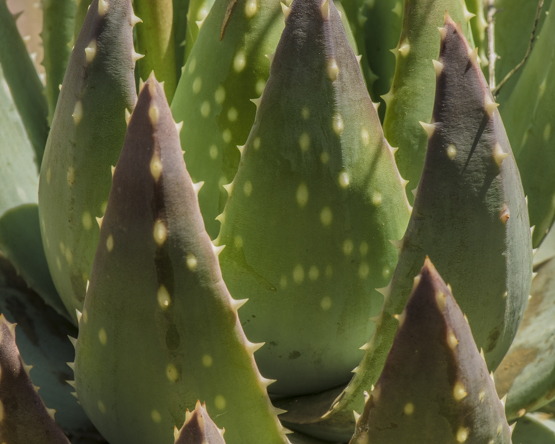
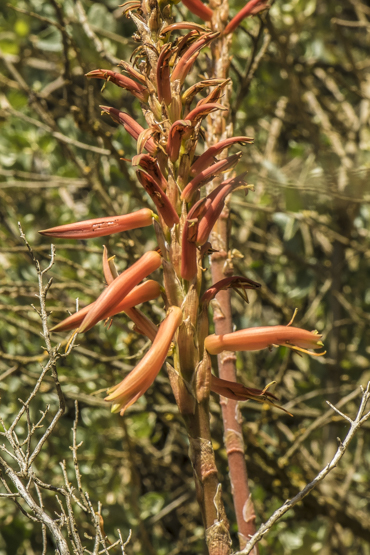
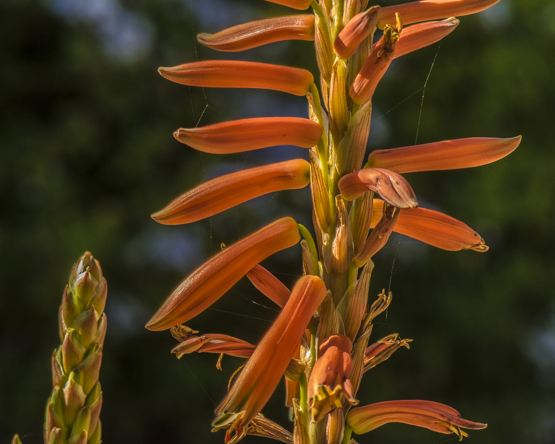
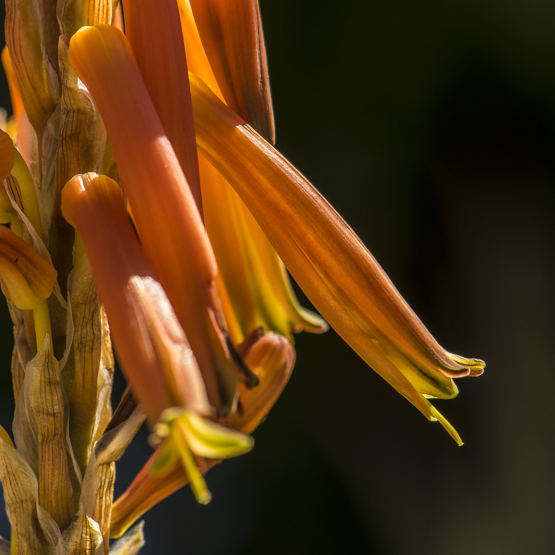
For many years, I have known A. brevifolia to be one of South Africa’s smallest Aloes. It is common in cultivation, but up to last month, I had never seen a plant in the wild. So, when someone gave me directions to a locality he had visited a few days before, I did not wait long to go there, especially because it was in the middle of the flowering season.
It was easy to drive up to a place from where I could see the plants growing on a steep slope. But between the car and the slope, there was a little stream and a lot of dead and live shrubs, so it took a lot of time and effort to come near enough to the plants to get some useful pictures. When I saw them from nearby, I was most surprised by their size, as they were over 3 times bigger than the biggest A. brevifolia I had ever seen before.
On digging into the literature, I found the following information:
Aloe brevifolia has 3 varieties: brevifolia, postgenita and depressa.
Var. brevifolia forms dense colonies of small rosettes. These are about 8 cm in diameter, with 30-40 leaves up to 6 cm long and 2 cm wide. This is by far the most common form in cultivation.
Var. depressa has open rosettes up to 30 cm in diameter; solitary or up to 3. The leaves number about 60, 12-15 cm long x 6 cm wide.
Var. postgenita is intermediate between the two others.
In all three, the inflorescence is about 60 cm tall, with 4 cm long flowers in shades of red (sometimes yellow). Flowering time is October to December.
The species as a whole, occurs in the Western Cape, from Caledon to Cape Agulhas. Var. depressa seems to be known only from the site referred to above.
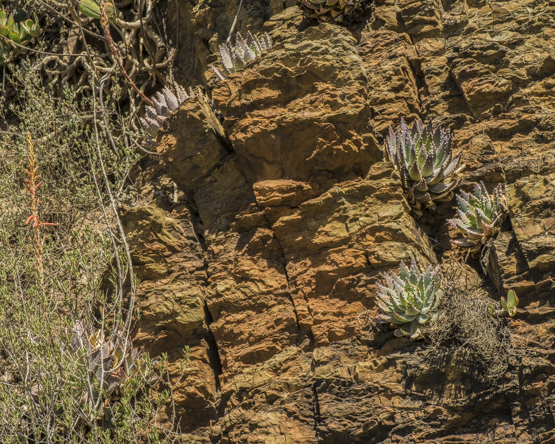
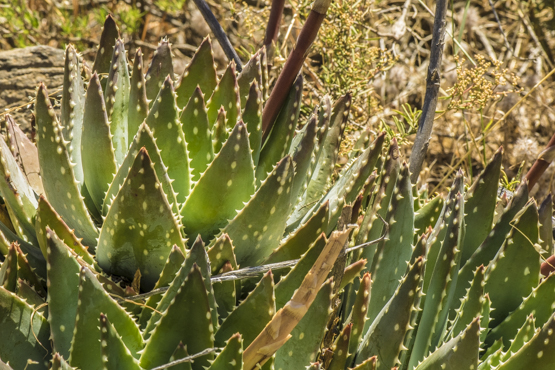

Plants of this species often occur in great quantities as pioneers in disturbed soil (see first picture). They occur throughout the Little Karoo to the Eastern Cape, form robust shrubs up to 1 m tall and are often heavily browsed.
The reddish-brown branches become rough with age and are characteristic for the species; they bear cylindrical leaves up to 1.1 cm long.
The flowers are pink-purple to dark purple and about 2.2 cm in diameter, appearing in spring and summer (Oct. – Feb.).
Pictures taken 3 December 2017.
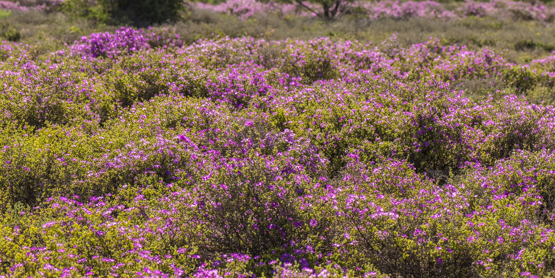
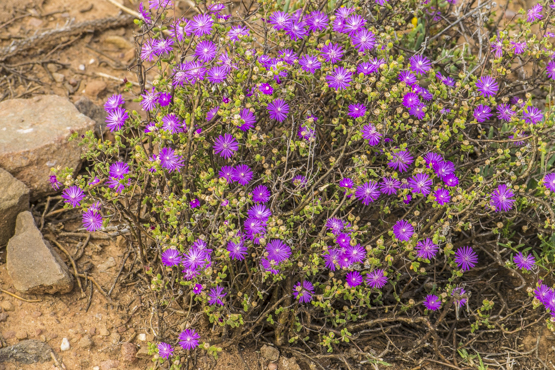
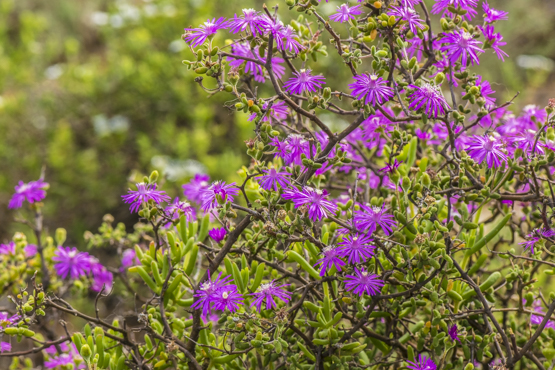
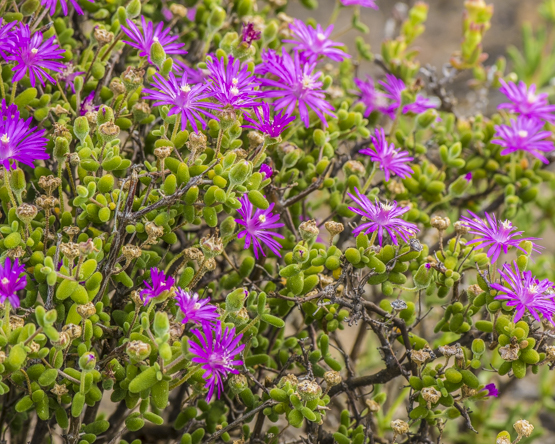
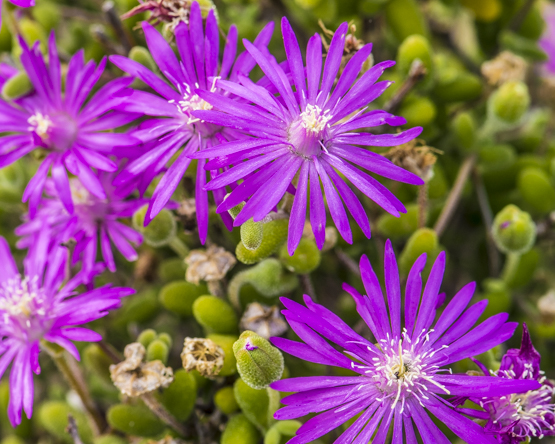
Although the plants are very variable in almost all respects, they are always completely and densely covered with white to reddish hairs (except the inside of the flowers).
They have erect to creeping stems, 0.5-1.2 m tall and with egg-shaped to round leaves 16-40 cm long and 0.6-3 cm wide, often with an auriculate* base. The upper leaves are stalked, the ones near the base without stalks.
The inflorescenses are 15 cm wide and produce bulbils; the flowers have 1.4-3 cm long tubes and are red, pink, or yellow, often with red stripes.
The species occurs in central, eastern and northern Madagascar, usually on damp or wet rock surfaces.
Several varieties have been described, but they are not upheld in the Illustrated Handbook of Succulent Plants.
*auriculate: with small roundish or ear-like appendages.
Plants photographed in June 2017
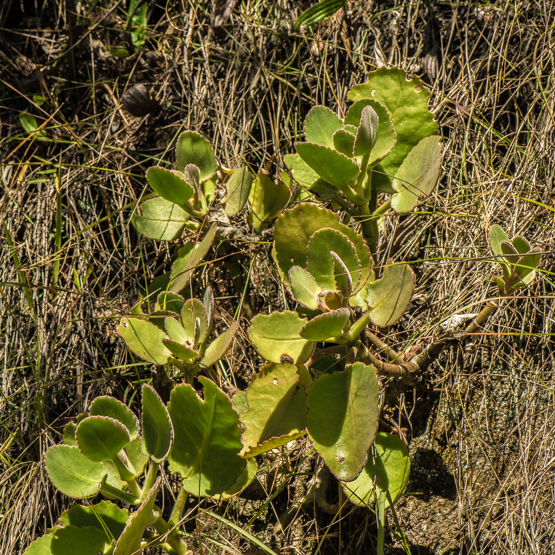
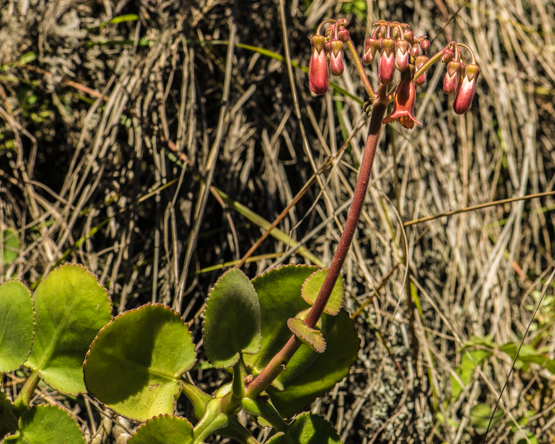
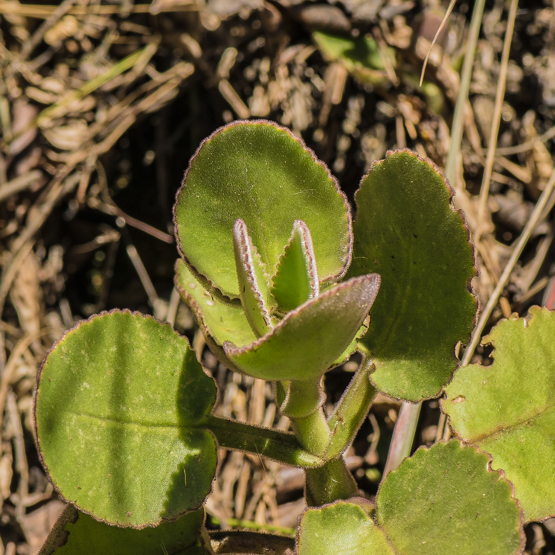
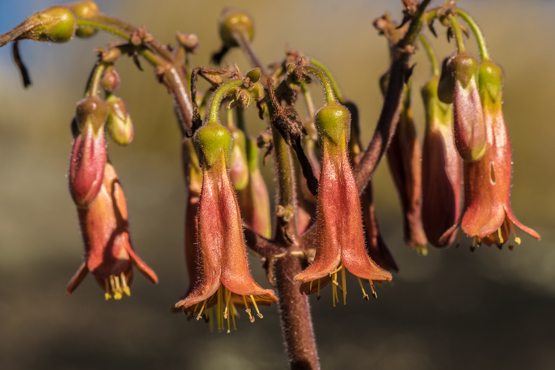
This species has a number of uncommon features, making it easy to recognise – once you know what to look for.
It is a small shrub up to 15 cm tall of which the short shoots are decked out with small spine-like projections and it has boat-shaped leaves to 1 cm long and 0.5 cm wide (those on upper shoots are more or less round). The leaves are covered with papillae which are more or less cobblestone-shaped, but much longer on the edges.
The flowers are solitary, pinkish-purple to almost white and to about 3 cm in diameter; they appear in July-September and are followed by fruits with 6 (instead of the usual 5) compartments.
The plants occur in deep soil usually covered with quartz pebbles, from Namaqualand to Clanwilliam.
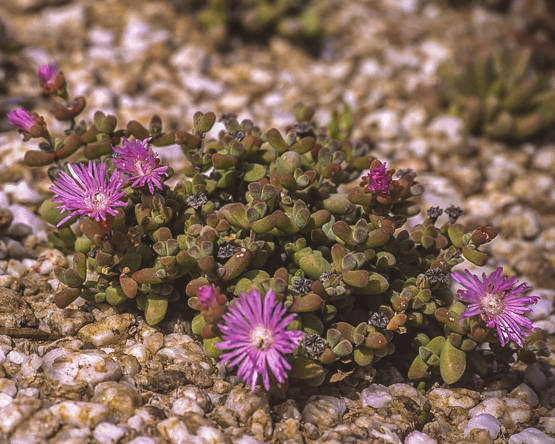
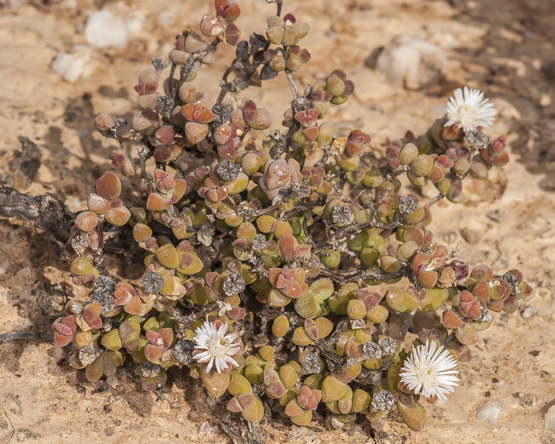
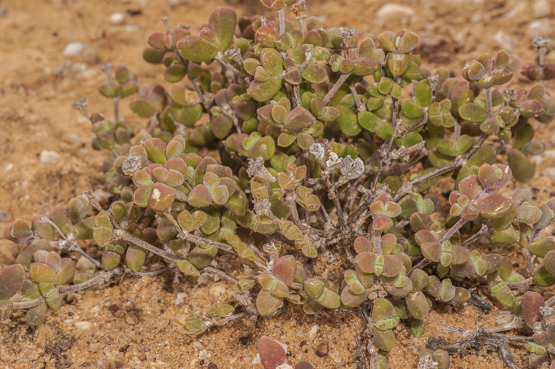
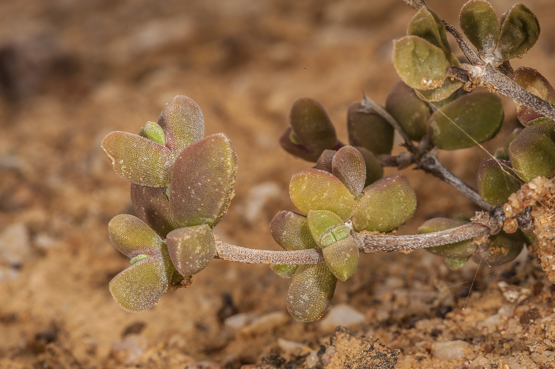
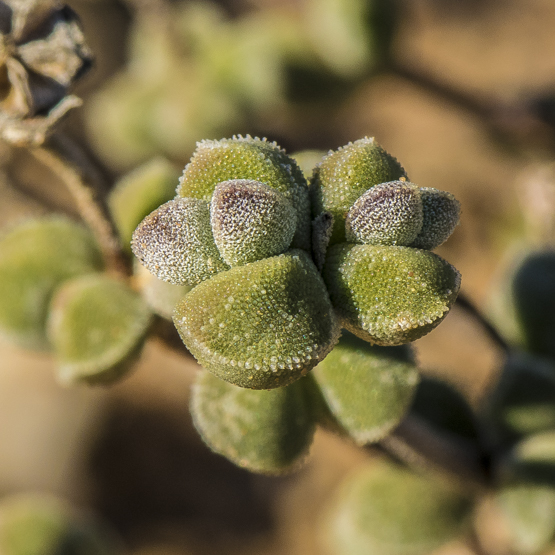
Pictures 3 and 4 show examples of the “untidy” form of E. multiceps referred to in the preceding post.
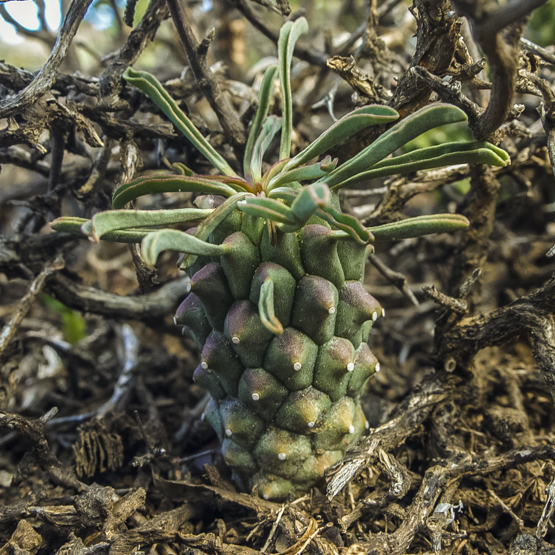
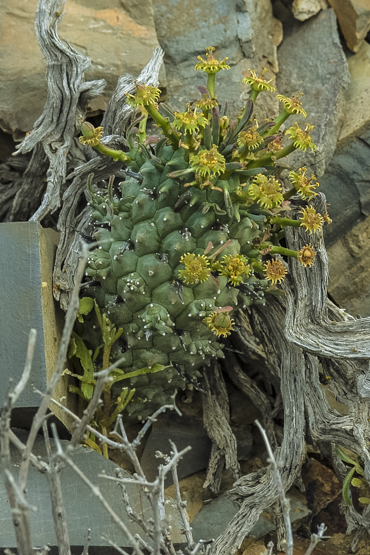
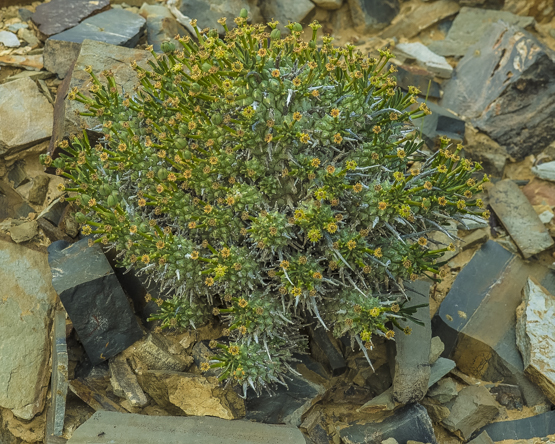
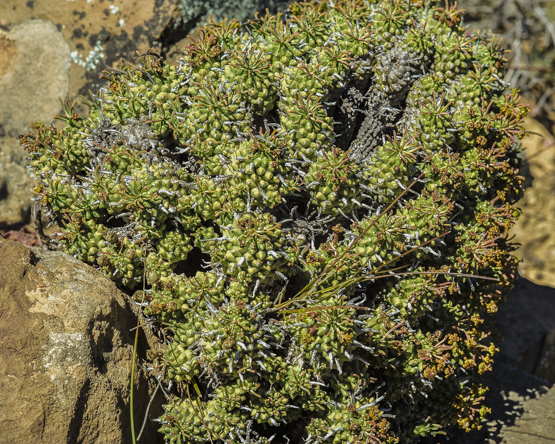
Among all the various growth forms in the genus Euphorbia, the design of this species stands out as something singular.
The plants consist of a thick main stem covered with numerous branches up to 8 cm long, decreasing in length towards the top of the plant.
In this way, a compact cone is formed up to 60 cm tall and to 25 cm across at base. In some cases however, the plants are not shaped quite so neatly, resulting in a far less appealing and peculiar habit of growth (see pictures).
The spines are in fact sterile flower stalks; they are 0.8 to 7 cm long and arise from both main stem and branches.
The species occurs on stony slopes and flats from Steinkopf in Namaqualand to the western Little Karoo.
